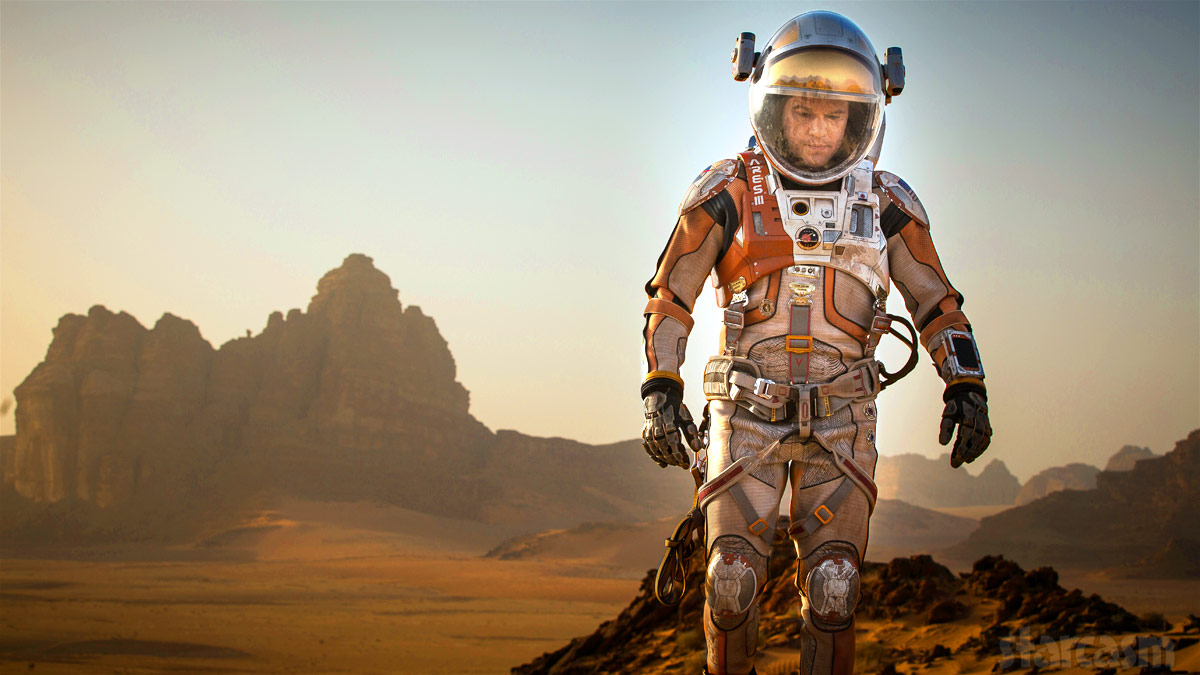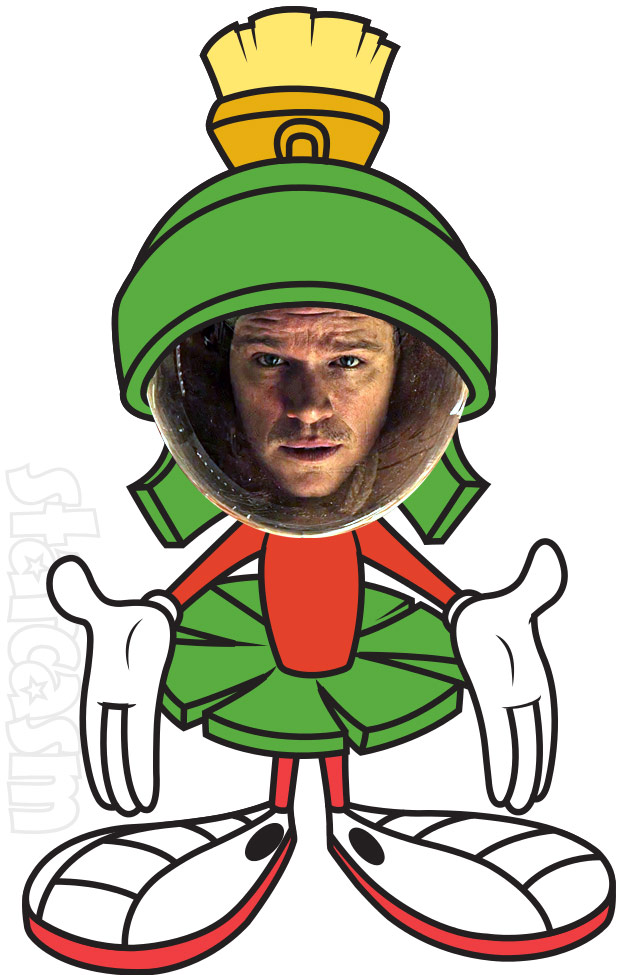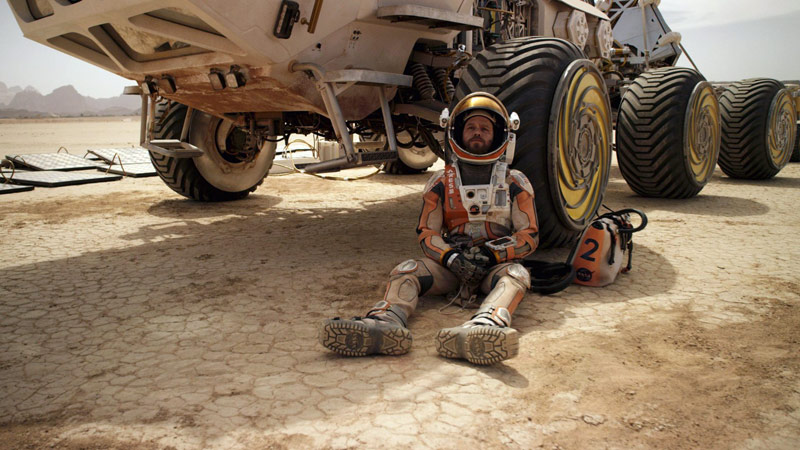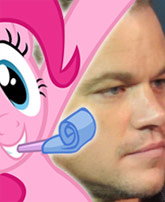What are the differences between The Martian movie and the book?
The highly anticipated and critically acclaimed big screen adaptation of Andy Weir’s break-out New York Times bestselling novel The Martian FINALLY premiered last week and wound up raking in 55 million Earth dollars, making it the second-highest grossing film to ever premiere in October behind another recent thriller about space and isolation: Gravity.
I was rather enamored by all of the hype prior to the release of The Martian in theaters, both from raving critics who had already seen the movie, and from rabid fans of the book who couldn’t wait to see their favorite fictional Martian come to life in the skilled hands of director Ridley Scott. So, I bought the book and binge read through it in one day.
LOVED it!
I’m a guy who likes corny jokes and I’m a tinkerer, so of course I was drawn to Mark Watney’s penultimate ode to “working with what you got.” This may sound weird, but it’s the same kind of thing that initially made me a huge fan of Discovery’s Gold Rush reality series. Instead of Mars, it’s Alaska, and instead of a brilliantly creative botanist astronaut, it’s Bumbledore himself, Todd Hoffman. While reading The Martian, I was always saying to myself, “Damn that’s brilliant! I never could have thought of that!” While watching Gold Rush, I was always screaming at the TV screen, “Why did you do that?! There are so many better way to do that!”
Anyways, seeing as how the book was fresh on my mind when I went out to see The Martian last Thursday night (yes, I was there with my 3-D glasses on for Premiere night), it was pretty easy to spot the differences between The Martian movie and the book. So, I thought I would put together a list.
Before I start, let me say again that I LOVED the movie! As is often the case when reading a book and then seeing the movie, I was disappointed by some of the things left out. But, not every book can be an HBO series, so something’s gotta be cut to keep it under two-and-a-half hours. Matt Damon was brilliantly botanical and nerdy while also being astronautically badass. The whole thing made me really appreciate what it is to be a human being, while at the same time making me want to be a kid and get a four-wheeler, a helmet, some raw potatoes, and a lot of disco music, and head out into the desert!
The movie was thrilling and emotionally powerful — often at unexpected times. And perhaps it was because I was there on premiere night and the theater was jam-packed with neck beards and glasses, but Mark Watney’s jokes were even funnier on the big screen — a wonderful air lock pressure release from the his constantly tense reality throughout.
Speaking of Watney’s humor, I couldn’t help but throw this Matt Damon and Marvin the Martian mash up together in Photoshop:
Critics of the book sometimes point out that there is a lack of descriptive language, leaving the reader a bit too large of a task trying to envision exactly what Watney’s surroundings are like. I didn’t have an issue with it because Watney’s sections were all written by his character as log entries, and just how descriptive do we expect a botanist astronaut to be?! Even so, that lack of descriptive prowess helped make the book ideally suited for the big screen where Ridley Scott was able to fill ALL of that in for us. Just amazing.
OK, on with my list of differences between the book and the movie.
Oh, SPOILER ALERT!
The major difference, and I’m sure this had to do with timing, is the huge dust storm that Watney had to contend with on his way to the Ares 4 site. Everything about this story line was gone from the movie, from Watney shorting out his communications system and losing contact with N.A.S.A., all because he leaned a drill against a metal table, to him flipping the rover in a soft patch of powdery sand just as he was descending into the Schiaparelli crater.
In the book, Watney had no idea that he was headed into a massive dust storm, which would certainly have crippled his solar-powered land voyage and resulted in him being stranded and most assuredly dead. Meanwhile, the folks at N.A.S.A. knew but had no way to relay the information to Watney, which created a very dramatic and anxious story line there.
Thankfully, Watney was his usual observant and careful self, and he figured out that his loss of solar power was probably due to being in the edge of a dust storm early enough to then do some rather brilliant diagnostic work and figure out roughly which way it was headed and how fast. (He set three solar panels 40 kilometers apart and measured their wattage at the exact same time to get the information he needed. His most brilliant move was figuring out how to get readings from each panel at the same time, which he solved by simply recording the two not in his presence with the HVA suit cameras, which time stamped all videos. Brilliant!)
The second major thing is the ending — the scenes after Mark Watney has returned to Earth. NONE of that is in the book. The book ends with one last journal entry from Watney soon after he is back aboard the Hermes.
I wanted to get those two things out of the way first, because they are so major. From here, I will just do a bulleted list of the things that occurred to me. I make not claims that the list is comprehensive in ANY way.
• After seeing the movie, many folks might be asking, “What is a SOL?” They never really answered that question in the film. A SOL is the Martian equivalent to a day on Earth, or, in other words, the amount of time it takes the planet to rotate once. A Martian SOL is 39 minutes and 35 seconds longer than an Earth day. The end result in The Martian is that, when Watney is rescued, it is 549 Martian days after Ares 3 landed, but 564 Earth days after Ares landed.
• The crew left Mark Watney for dead on SOL 6 in the book, it was a little later in the movie (somewhere in the teens I believe)
• In the book, Mark Watney is a botanist AND a mechanical engineer. I don’t think they mentioned the engineer part in the movie.
• Watney used emergency pop tents in the book as additional gardening space, and that was the main thing that Mindy saw in the satellite photos that suggested he was still alive.
• Mark Watney cared little for N.A.S.A.’s overthinking everything, and there was one scene in the book that was left out of the movie that summed it up best. The water reclaimer (one of the most valuable pieces of equipment keeping Watney alive) was having issues. The N.A.S.A. team obsessed over it for a long time, but Watney deduced it must be build up in one of the lines. He suggested that he just remove the lines, find the build up, and unclog it, then put them back. N.A.S.A. insisted that he not do that until they had more time to figure out the best course of action. Watney proceeded to remove the lines, find the build up, and unclogged it. It worked perfectly after that.
• The scenes after the airlock blew off the HAB had quite a few differences. Here are some of the things in the book that were not in the movie:
The airlock was leaking air and Watney once again had to use fire — something seriously frowned upon in the astronautiverse. This time, the fire caused small whisps of smoke that Watney was eventually able to follow to see where the air was leaking out from. He then sealed the crack.
Watney was forced to cut off one of the arms of his EVA suit and use the fabric (and suit repair kit) to fix his cracked visor and to reseal the armhole. As a result of the visor fix, he was blinded and forced to navigate using the camera mounted on the still attached arm of his EVA suit. This also meant that he had to retrieve the other EVA suit with the use of only one arm.
In order to get the detached airlock closer to the HAB to cut the time it would take to get to the HAB and try to retrieve another intact EVA suit, Watney rolled the airlock by jumping and slamming his back against the side repeatedly.
• Speaking of his back, Watney injured it later while moving rocks, something that wasn’t included in the film.
• This conversation between N.A.S.A. public relations official Annie Montrose (played by Kristen Wiig) and Teddy Sanders (Jeff Daniels) after Teddy refused to try the Rich Purnell Maneuver despite Mitch’s (Sean Bean’s) angry objections had a very important line cut:
Teddy looked to her. Sorry about that, Annie,” he said. “What can I say? Sometimes men let testosterone take over—”
“I was hoping he’d kick your ass,” she interrupted.
What?”
“I know you care about the astronauts, but he’s right. You are a fu**ing coward. If you had balls, we might be able to save Watney.”
• Another significant conversation that was taken out in the movie was between Hermes astronaut Beth Johanssen (Kate Mara) and her father after it was revealed they would be returning to Mars in an attempt to rescue Watney. Her father is emotional and angry that she would agree to go. One of the major concerns is that if the rendezvous with the Taiyang Shen supply probe goes wrong, the crew wouldn’t have enough supplies to survive a return to Mars and back. Johannsen reveals that Commander Lewis picked her to be the lone survivor if that occurred:
They picked me to survive. I’m youngest. I have the skills necessary to get home alive. And I’m the smallest and need the least food.”
“What happens if the probe fails, Beth?” her father asked.
“Everyone would die but me,” she said. “They’d all take pills and die. They’ll do it right away so they don’t use up any food. Commander Lewis picked me to be the survivor. She told me about it yesterday. I don’t think NASA knows about it.”
“And the supplies would last until you got back t Earth?”
“No,” she said. “We have enough food left to feed six people for a month. If I was the only one, it would last six months. With a reduced diet I could stretch it to nine. But it’ll be seventeen months before I get back.”
“So how would you survive?”
“The supplies wouldn’t be the only source of food,” she said.
He widened his eyes. “Oh…oh my god…”
“Just tell Mom the supplies would last, okay?”
Watney read Agatha Christie novels because that was pretty much all he had. Plus, he watched a LOT of 1970s and 1980s television (including Three’s Company, Happy Days, and The Dukes of Hazzard). We did see him watching a scene from Happy Days (in order to set up The Fonz inspired “Ayyyyyyy!!” photo later), but otherwise the TV shows didn’t play nearly as big a part as the disco music. (Watney watched e heck of a lot of TV in the book.)
• In the book, Watney figured out a way to take hot baths using the nuclear-powered RTC. It seems like that would have been a great (and short) scene. Perhaps that will show up on the Blu-ray special edition as a bonus?
• The movie never had a scene towards the end in which Watney clearly voiced his hatred for potatoes after having to eat potatoes — and only potatoes — for months. In the book, his potatopinion was clear.
• In the book, Watney brings up the idea of puncturing his suit and doing the Iron Man trick when he is being picked up by the Hermes, but he doesn’t actually do it.
• In the Watney rendezvous scene it is Beck, not Captain Lewis, who grabs Watney.
• I didn’t pick up on this, but the movie also altered the races of two characters. From The Hollywood Reporter:
Author Andy Weir’s best-selling 2014 novel of the same name featured Dr. Venkat Kapoor, a character of Southeastern Asia descent, whose name in the film is changed to Vincent Kapoor, and is played by Chiwetel Ejiofor, a black actor. The character says that his father was “a Hindu” and his mother was “Baptist.”
Additionally, character Mindy Park, who is Korean-American in the book, is played by white actress Mackenzie Davis in director Ridley Scott’s film.
If you have read the book and haven’t seen the movie, or if you haven’t read the book and haven’t seen the movie, either way to NEED TO SEE THE MOVIE! of course, if you haven’t seen it and you read all the way to this point, your enjoyment might be a bit depressurized.






